How to fall asleep when you can’t — tried and tested tips I've learned from experts
From breathing techniques to visualization, we test genuinely effective tips for falling asleep
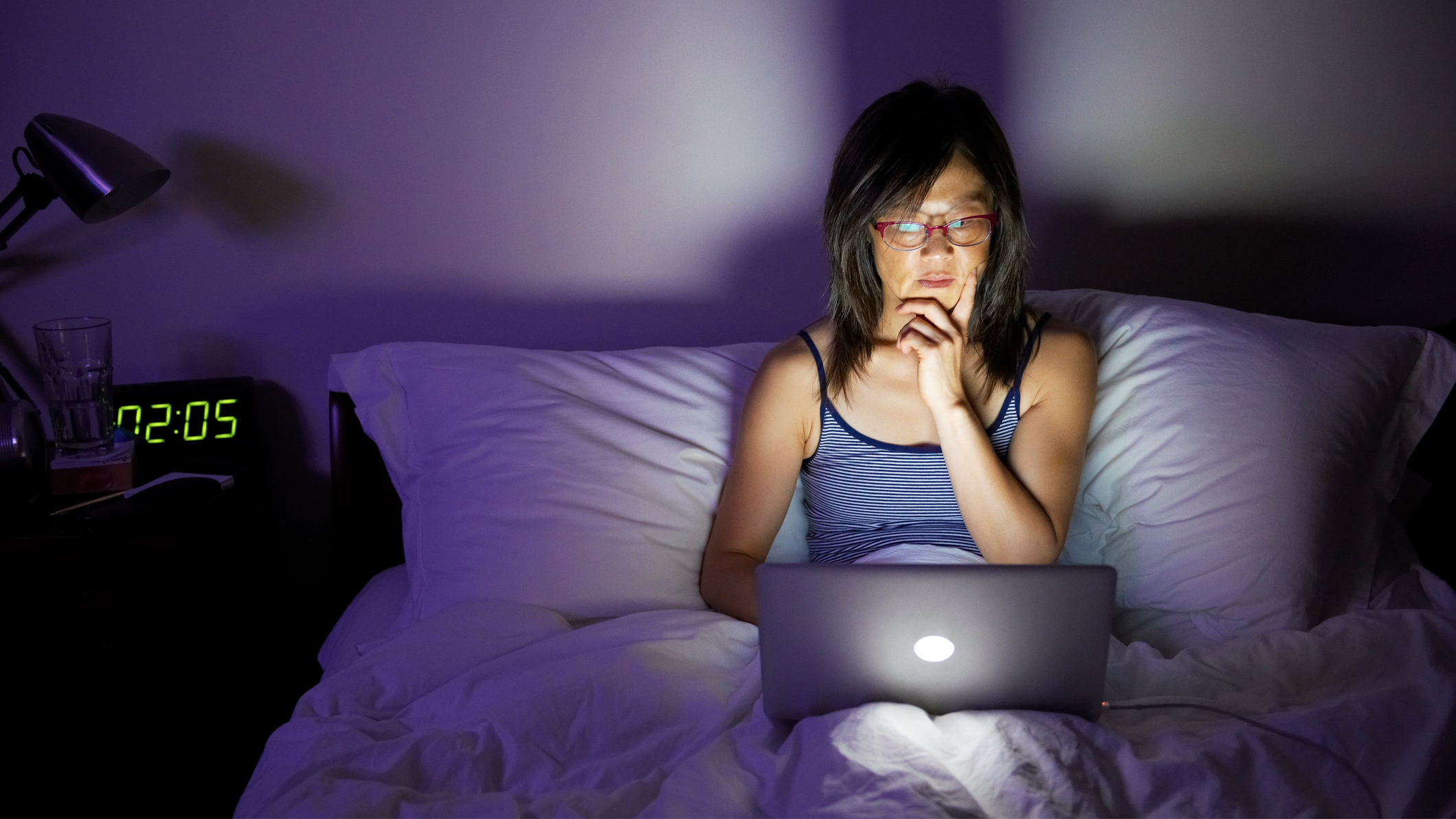
There’s nothing worse than lying awake at night, feeling like falling asleep is an impossible task. The longer you lie there, the worse it seems to get. If you'll pardon the wordplay, it's a nightmare. And unfortunately, this is the reality for a huge number of adults all around the world.
Sometimes it's about fixing the core problems, and there are certainly long term solutions that might help you sleep better, like choosing the best mattress for your sleep needs. But sometimes you'll need a trick that you can try straight away.
Myself and the Tom's Guide sleep team have tried and tested these expert techniques on how to fall asleep when you can’t, in search of the most effective methods. In this article, we’ll be detailing our experiences with each one so, hopefully, you'll find the right solution for your night time troubles. Sweet dreams.
Expert tips and techniques to fall asleep when you can’t
Try a body scan meditation
A body scan is a kind of meditation that can help you identify and release stress and tension in your body and your mind.
To practice a body scan, slowly check in with different areas of your body, starting at the toes or the head and working up or down. As you check in, acknowledge any sensation you feel, and then let go of it and relax the muscles.
Repeat the process with the different areas of your body (toes, feet, lower legs, knees, upper legs, etc,) until your whole body is in a relaxed state.
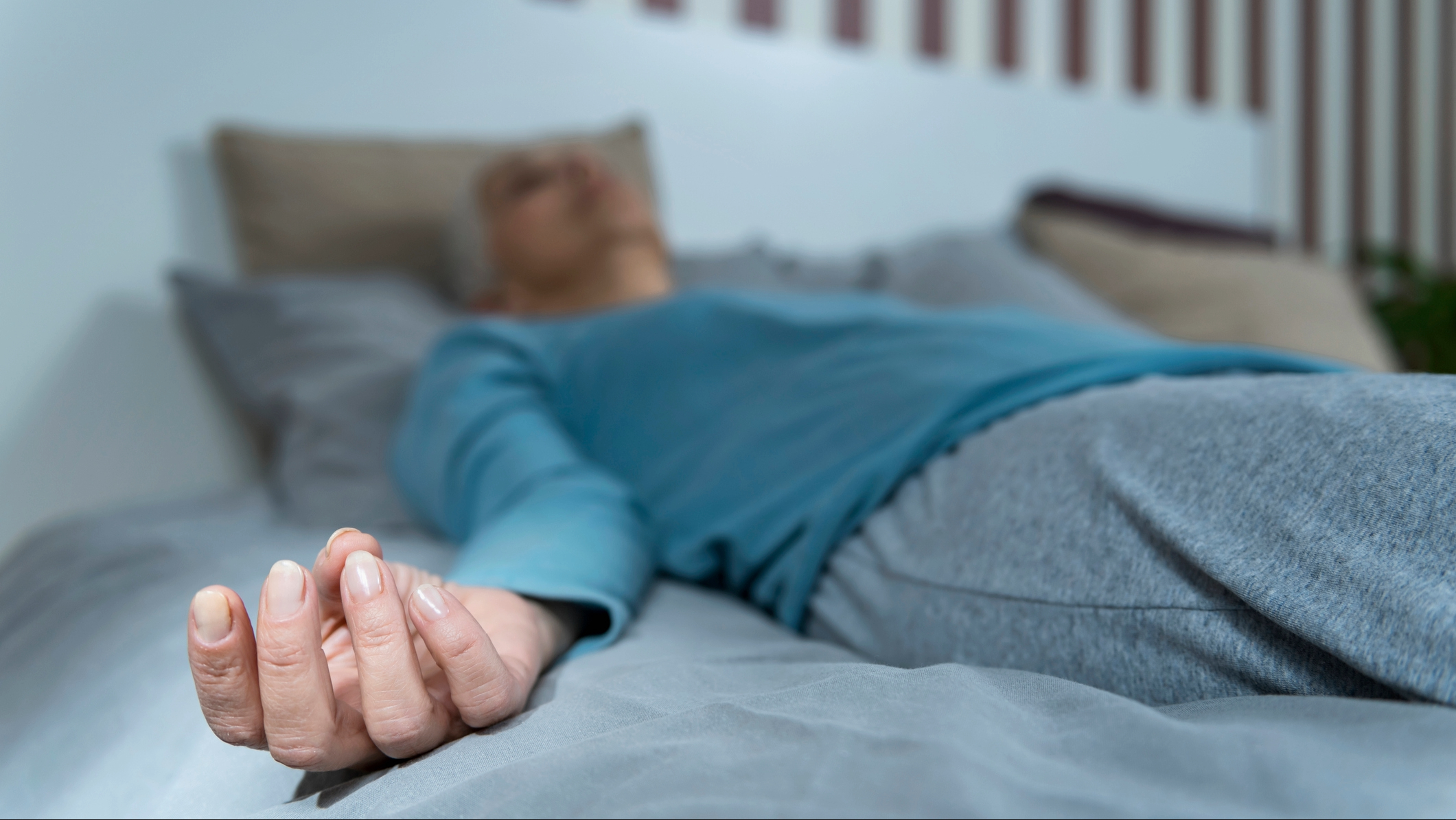
Claire Davies, a certified sleep coach and Sleep Editor for Tom’s Guide, swears by the body scan meditation, saying “I normally drift off before I can get to the other side of my body.”
Sign up to get the BEST of Tom's Guide direct to your inbox.
Get instant access to breaking news, the hottest reviews, great deals and helpful tips.
If you want to try this for yourself, you can read our guide on how to use the body scan technique, which includes step-by-step instructions. Personally, when I’ve tested this method, I find it hard to concentrate and often lose focus, especially if my mind is racing from nighttime anxiety, so it's not a universal solution.
Try controlled breathing with the 4-7-8 method
The 4-7-8 breathing method was developed by Dr Andrew Weil, Founder and Director of the University of Arizona Center for Integrative Medicine, as a way of activating your parasympathetic nervous system (PSNS), the system responsible for rest and relaxation.
This technique focuses on deep, rhythmic breathing. The core idea is to inhale for four seconds through your nose, hold your breath for seven seconds, and then exhale out of your mouth for eight seconds. This is considered one cycle, and it’s recommended you practice three or four cycles, twice a day. The key with this breathing technique is repetition, so you’ll need to practice the method daily to make it more effective.
Nicola Appleton, Sleep Editor for Tom’s Guide, uses the 4-7-8 method. She says the “method is my go-to when I'm in the grips of night time anxiety. It helps regulate my breathing, which can become shallow and rapid when I'm feeling anxious.”
“Sometimes I fall asleep relatively quickly after practicing the 4-7-8 method, while other times I feel relaxed enough to pick up a book or move on to a different relaxation method.” She continues.
If you think this might be an effective technique for you, follow our detailed instructions on how to use the 4-7-8 sleep method to fall asleep fast and ease night time anxiety, or watch the video below.
Try visualization with the Military Sleep Method
The Military Sleep Method is a visualization technique designed to relax the body and mind as quickly as possible. As the name suggests, this method is designed to help soldiers fall asleep in combat environments, so it can be incredibly effective. In fact, with practice, it’s said to be effective for 96% of people after 6 weeks.
For full instructions and a deeper look into this technique, read our guide to using the Military Sleep Method to fall asleep fast.
The general idea is that you begin by trying to relax the mind and body and then imagine yourself in one of two scenarios. Either you’re lying on your back in a canoe on a placid, calm lake with nothing but a crystal clear sky above you, or you’re lying in a black velvet hammock in a pitch black room.
When a body scan isn’t quite cutting it, TG Sleep Editor Claire Davies uses this method instead. She says, “I learnt the Military Sleep Method years ago and still use it now when I’m feeling too stressed and tense for sleep. I love the imagery of lying in a canoe on a calm lake, as being outdoors is generally my happy place.”
However, it’s important to note that without continual, daily practice, the Military Sleep Method is unlikely to be as effective. In fact, Claire notes that “only after a few weeks of using it every night did it start to help me fall asleep really fast – so if you need a quick fix, I’d recommend a full body scan instead.”
Try scrambling your thoughts with Cognitive Shuffling
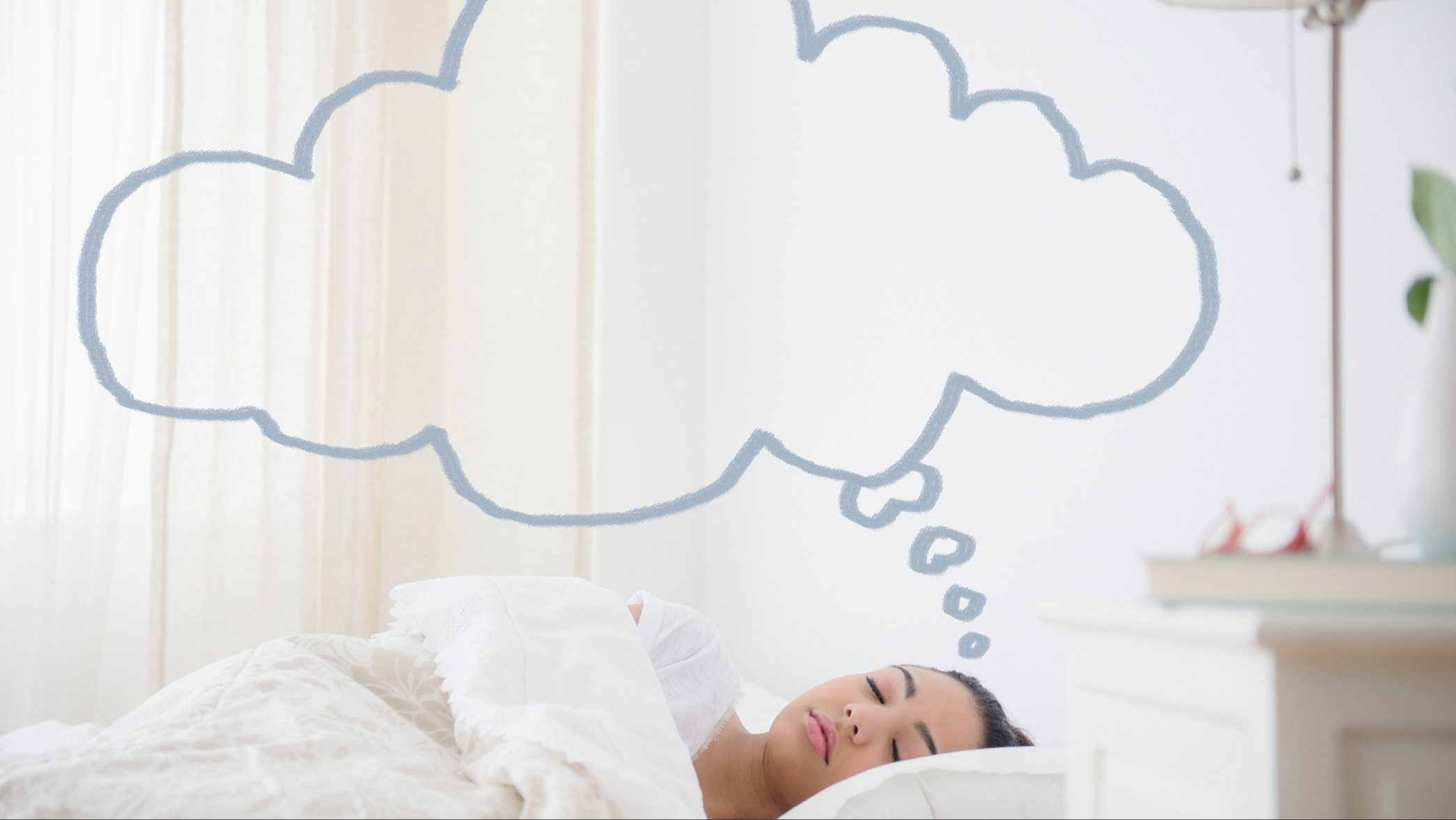
We all know the feeling. Right before we drop off, our brain becomes incoherent and rambling, plucking random thoughts out of the air with no logic or meaning behind them. If this happens, it means your brain has stopped trying to make sense of things and is ready to fall asleep.
Cognitive Shuffling is designed to trick your brain into doing this prematurely. By purposefully scrambling your thoughts, you can bypass the natural process and fall asleep quicker. This is because your brain will give up trying to determine any meaning from them, tricking it into thinking you’re in a safe situation to fall asleep.
It’s one of the easiest methods to try and it needs little focus or concentration, hence why it’s now my personal go-to. I find no matter how fast my heart is racing or how anxious my thoughts are, I can fall asleep in minutes if I start Cognitive Shuffling.
You can find out more about this technique in our full guide on how Cognitive Shuffling works, but if you want to give it a go now, all you need to do is think of random objects, visualize them, and then think of more random objects that have no link, meaning, or significance. If you find your mind wandering, just acknowledge it and return to visualizing random items.
Power through with the Navy SEAL Sleep Method
It’s important to note, as we approach this technique, that it's not necessarily designed to help you get to sleep at night. Instead, the Navy SEAL sleep method is designed for short power naps of 8-10 minutes, to keep you energized throughout the day if you’re short on time.
This technique was shared by a former Navy SEAL officer as a way for those in higher-pressure environments to get the rest they need.
Full instructions for trying this technique can be found in our guide on how to fall asleep fast with the Navy SEAL Sleep Method, but the general idea is to raise your legs above your body.
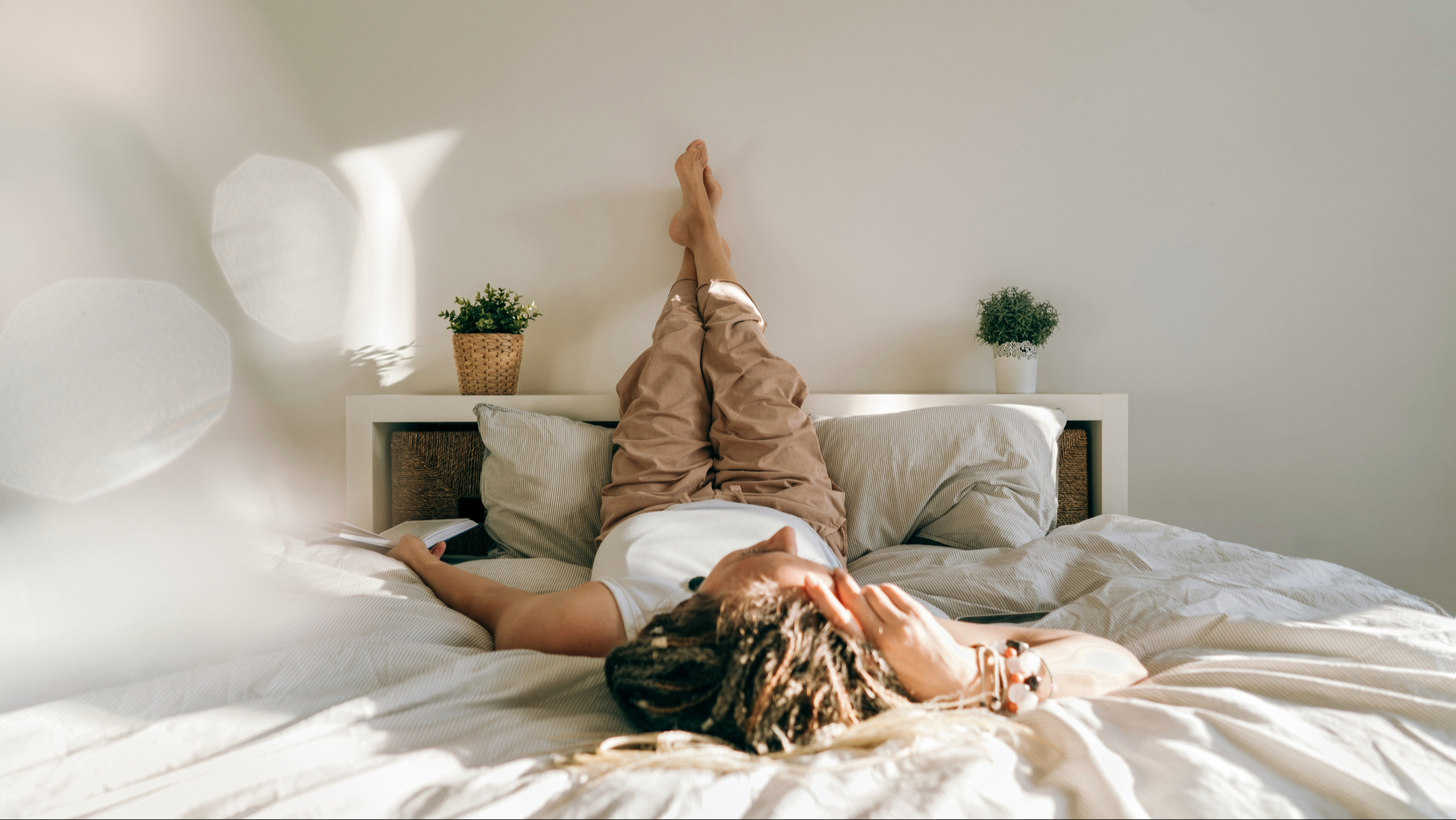
The most common way of doing this is to lie on the floor next to your bed, and raise your legs to rest them on the bed.
Claire says this “helps you drop off fast because it encourages blood flow away from your feet and legs, pushing it towards your heart and brain instead. This makes you feel very relaxed very quickly, so you can fall asleep faster.”
You'll likely not want to spend a whole night with your legs elevated in this way, but if you emerge from your nap sleepy, you could then move on to another method.
Expert tips to fix your sleep routine
Why do we have trouble falling asleep?
It’s extremely common to have trouble falling asleep. In fact, around 30% of adults have symptoms of insomnia. There are some common things that may be causing your difficulty to sleep, including:
- Mental health: Anxiety, depression, and other mental health issues can have a big impact on how easy it is to fall asleep. Higher cortisol levels in the evening can make it difficult to relax and allow your brain ‘switch off’, while racing thoughts can keep you alert.
- Bedtime routine: Your nightly routine can play a big part in how easily you fall asleep. Factors like how much screen time you have, the levels of stimulation you have, and the time you choose to go to bed can all have a negative effect on your sleep.
- Sleep hygiene: Your habits and environment contribute to your sleep hygiene, and if these aren’t set up to promote better sleep, you may struggle. Consider factors like diet, sleep schedule, electronics use, the setup and use of your bedroom, and your general lifestyle, like drinking, smoking, and exercise.
- Sleep deprivation: Unfortunately, the more sleep deprived we are, the harder it is to fall asleep. If you’re overtired, your stress hormones are higher and your ‘fight-or-flight’ instincts are more likely to kick in, making you too alert to fall asleep.
Why do some of us wake up repeatedly in the middle of the night?
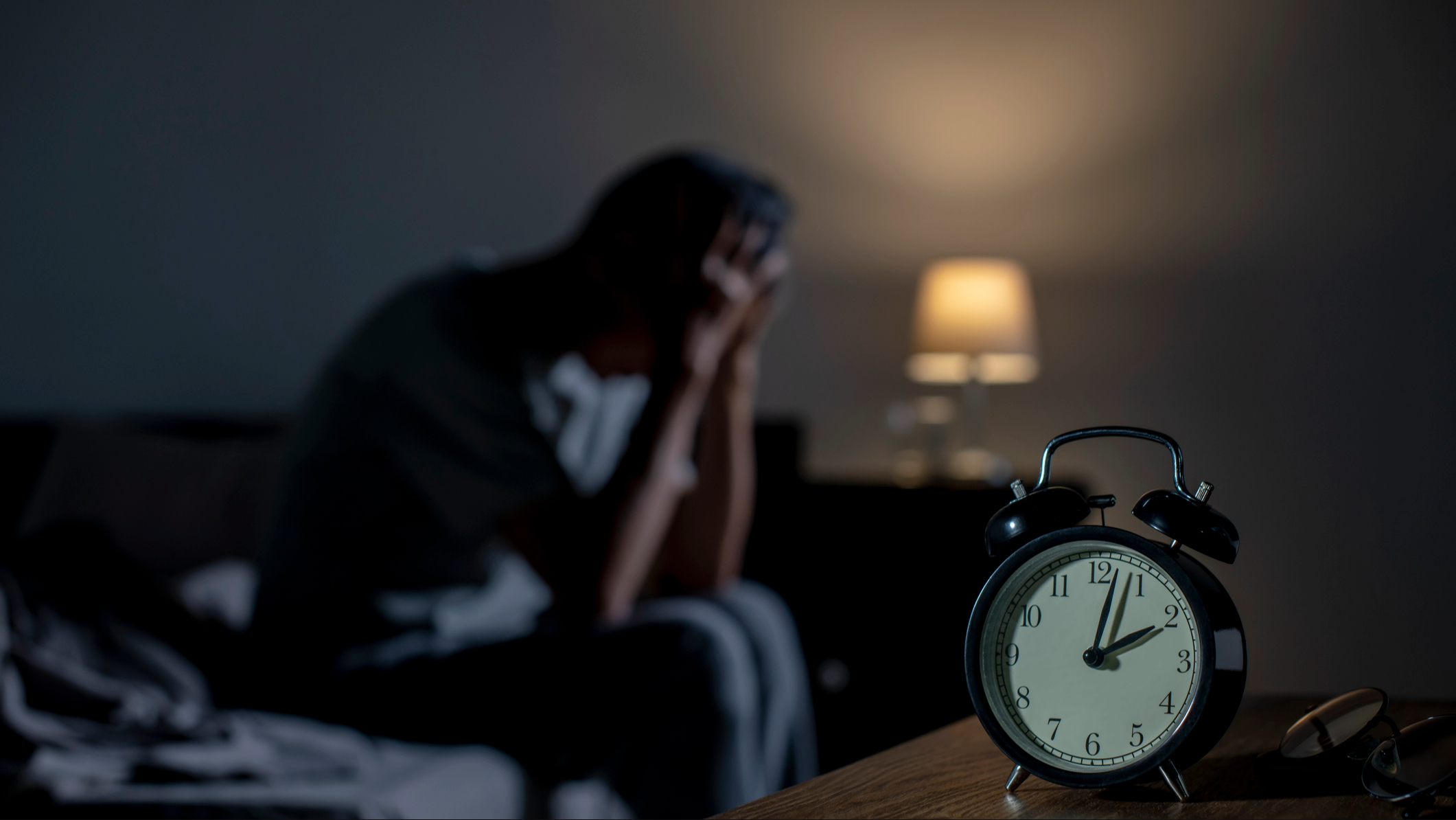
After easily drifting off to sleep, it can be incredibly frustrating to find yourself wide awake in the middle of the night. Many people report repeatedly waking up between 2am and 4am every night, finding it difficult to get back to sleep. In fact, one of the most common complaints is consistently waking up at 3am.
Lifestyle choices, habits, and environment can all contribute to your ability to stay asleep. Some common causes of waking in the night include:
- Caffeine consumption: Because of coffee’s long half-life, it can take a while to leave your system, which means any caffeine consumed in the afternoon may still be affecting you during the night.
- Stress: We naturally have higher cortisol levels in the morning, to prepare us for the day ahead. However, if you are stressed or anxious, your heightened cortisol might cause you to wake prematurely.
- Your environment: Stimulation from your environment may be causing you to wake up, without you realizing. Sources of light and sound should be minimized, so you can enjoy an undisturbed sleep.
Quick tips to help you sleep better
After considering the factors that can affect your sleep, you may have already begun to identify things in your life that are negatively impacting your ability to fall asleep. To help you on your way, here are some quick tips to help you sleep better:
1. Go to sleep and wake up at the same time everyday
2. Create a calm, clean, and cool sleeping environment
3. Don’t have any caffeine after midday
4. Stay away from rich foods, snacks, and alcohol before bed
5. Avoid exercise right before bed

Lauren is an experienced writer and editor in the health and lifestyle industry and has led many campaigns and projects that deliver news, advice, and research on all things sleep. As the Sleep Features Editor for Tom’s Guide, Lauren writes, commissions and edits sleep and mattress content, from in-depth how-tos in sleep and mattress health to interviews with doctors and neuroscientists on the latest news in sleep. Lauren regularly tests new sleep tech and accessories to evaluate their effectiveness for getting good quality sleep and easing specific sleep struggles like nighttime anxiety. Alongside this, Lauren reports on the best mattress brands out there, like Helix, Saatva, and DreamCloud, helping readers find the right mattress for them and the best deals on them.

